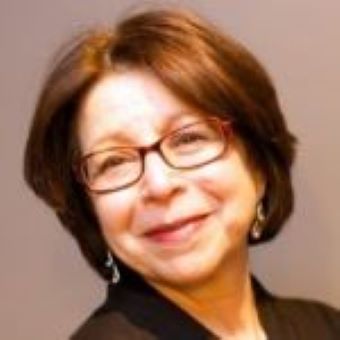Brandeis Acquires Lilith Archives, Cornerstone to Jewish Feminist Collections
Oct. 15, 2015
By Amy Sessler Powell
With 40 cubic feet of boxes containing 800 files ranging from AIDS to Zionism, the newly acquired Lilith Magazine archives at the Robert D. Farber University Archives & Special Collections tells pathbreaking stories from the lives of Jewish women over the past four decades.
 Behind the stories are still other stories, all contained in these boxes. It is nothing less than the "concrete evidence of the changes that have taken place in 40 years — both in the women's movement and in Jewish life. Lilith has both borne witness and spurred those changes along," said Susan Weidman Schneider, ‘65, one of the founding mothers of Lilith.
Behind the stories are still other stories, all contained in these boxes. It is nothing less than the "concrete evidence of the changes that have taken place in 40 years — both in the women's movement and in Jewish life. Lilith has both borne witness and spurred those changes along," said Susan Weidman Schneider, ‘65, one of the founding mothers of Lilith.
The stories within show how a magazine can form a "connective tissue" for women around the world and give voice to their issues. They show how a group of pioneering women journalists with little business experience started a nonprofit social-change-oriented periodical from scratch, learning as they went.
"We hope many of these documents will be inspirational to other feminist start-ups," Schneider said.
They tell the story of a bygone era of journalism where manuscripts went back and forth in the "snail mail," with handwritten comments in the margins, providing a window into the way stories took shape. They cover a breadth of topics like fertility, abortion, gender, a woman’s role in ritual and more, including the "darker stories" of substance abuse, domestic violence and poverty in the Jewish community that Lilith boldly took on when others shied away. Within the subset of these broader topics, are the original notes, the ephemera, the correspondence, the minutes and agendas from meetings and conventions, and the correspondence between readers and editors.
"Lilith offers 40 years of primary source material that opens a window onto myriad aspects of the lives of Jewish women over four decades. It reaches into every area of endeavor," said Dr. Joyce Antler, the Samuel B. Lane Professor of American Jewish History and Culture, and Women's, Gender, and Sexuality Studies.
Schneider determined that Brandeis was the best home for these papers.
"This archive does more than document the women’s movement from a Jewish perspective. For example, through these documents one can trace the emergence of the Jewish women's foundations, notes on how women will fund women's projects — or not. The Lilith collection opens a window on the development of the Jewish community and a whole range of gender issues from the feminist perspective," said Schneider, also a member of HBI's Academic Advisory Committee.
For Brandeis, the Lilith archive anchors a burgeoning collection of papers and archives by important Jewish feminists including Aviva Cantor, E.M.Broner and Fanny Hurst to form a critical mass that both supports the curriculum, makes Brandeis a destination for Jewish feminist research and opens the door to future collections of Jewish feminist papers.
"We have a sense of the interests of our research community and want to build on our existing strengths. The Lilith material is a wonderful trove for scholarship in the area of Jewish feminism and other subjects, and it lays a cornerstone for future collections," said Sarah Shoemaker, Associate University Librarian for Archives & Special Collections in the Brandeis Library.
Elaine Reuben, ’63 and a member of HBI's board of directors, supported the acquisition of th Lilith archive with a generous donation. She did so to honor "the immense meaning and value of the Lilith papers," to promote the notion of alumnae donating their papers to a Brandeis collection about women, and to encourage other donors to support this goal.
Because the archive spans a movement for gender justice over 40 years, Schneider noted that it tracks the arc of change through time — change in religious practice, in community structures and in relationships. For example, the early writings ask why women are not being "let in" to Jewish ritual, a struggle to gain equal access to the tradition. Then one can see the struggle shift "from equal access to equal value ensuring that new rituals honoring women's particular experiences become part of the accepted liturgy and practice." Several of the sections in the Lilith collection show the ways this happens — as in documenting how "women creatively repurpose a ritual such as the mikveh, using immersion to heal from the traumas of breast cancer or, mastectomy, or as a way of marking a transition out of an abusive relationship or marking a gender change."
Lilith took on the subject of Jewish American Princesses (JAPs), another topic documented in the collection, and Schneider stressed that this issue is more complex than it might at first appear — as many folders in the archive attest. Schneider says that this stereotype, often representing an amalgam of misogyny and anti-Semitism, brings to the fore both external and internalized bias, including "shame around financial privilege and shame around not having privilege, whatever the measure is in every generation."
On the subject of motherhood, the cover of the fourth issue of Lilith, back in the 1970s, featured a pregnant torso, and asked why Jewish leaders want women to be fruitful and multiply. Over the years, the magazine's articles about childbearing and reproductive choices have focused on everything from abortion or unplanned pregnancy to fertility challenges, new and old rituals around pregnancy, Jewish women's embrace of new reproductive technologies, and stories of Jewish women who relinquished their babies for adoption in the pre-Roe v. Wade era. "These are complicated narratives and the archives’ voluminous files on the subject attest to this," said Schneider.
Lilith also maintained a "talent bank, like expanded Rolodexes or binders of women experts" who could be quoted on various subjects, featured as speakers and cited as sources on a range of issues. "People knew to call us when they wanted to avoid panels full of men only," Schneider said.
In this day of paperless offices and constant purging, how did Lilith manage to save so much?
Schneider credits another of Lilith's founders, Aviva Cantor, whose papers are also at Brandeis, with having a historian's sense of the importance of saving documents and ephemera of potential interest. The fact that Lilith has remained in the same office building in Manhattan for 36 years also meant nothing, such as a move, prompted a purge.
Now that the Lilith's collection is housed at Brandeis, it will become a "living archive," with the magazine adding to the collection by sending more documents each year. "And apropos of th Lilith collection being a magnet for the papers of other feminist entities, I pledged to send my own personal papers to Brandeis," Schneider said.
Antler is excited about the impact this archive will have on curriculum. "I love to use primary sources, as do so many others on the faculty. Here, we are exposed to the thinking, the conflicts, the innovation of these exciting decades. In one place, we really get a lens into what women were doing and thinking at a time of amazing growth and change. Lilith was there, at the center."
 Amy Sessler Powell is HBI's director of communications.
Amy Sessler Powell is HBI's director of communications.
Susan Weidman Schneider, ’65, one of Lilith’s founding mothers, received the Alumni Achievement Award on Oct. 24, 2015, along with Roy DeBerry ’70, MA ’78, PhD ’79, a human rights and social justice activist.